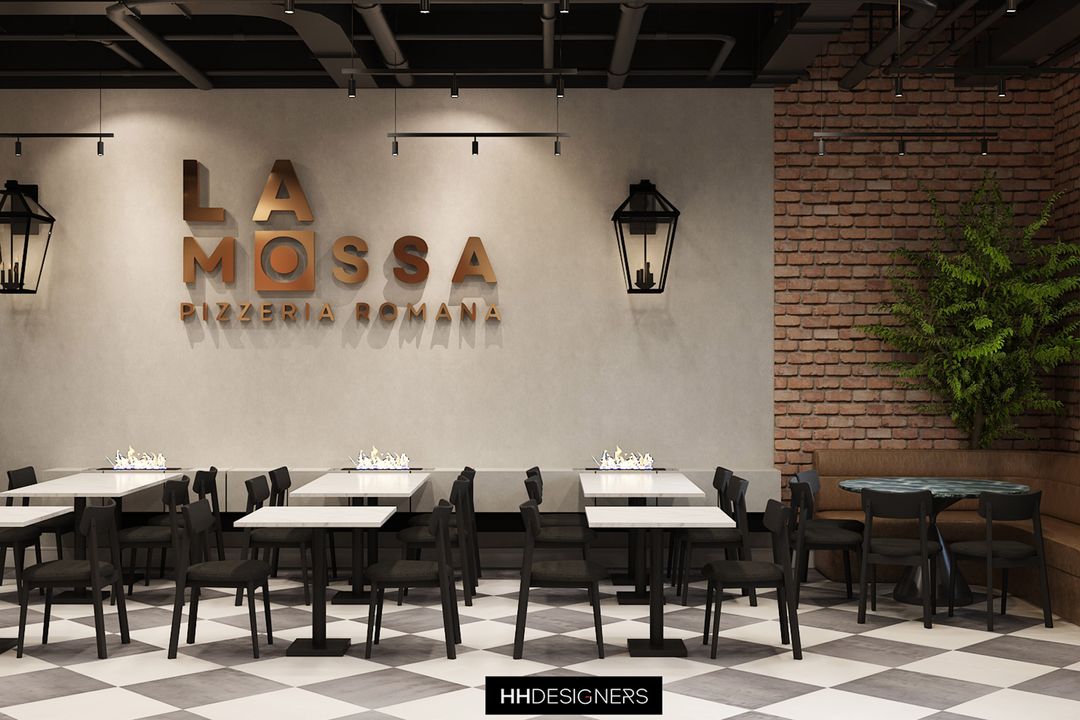
9.23.2025
Opening a flagship retail store is more than signing a lease and filling it with merchandise. It is the physical embodiment of your brand, the destination that sets the tone for all other customer experiences. While real estate brokers may focus on square footage and foot traffic, an interior design perspective brings a more holistic lens:
Cities like New York, Newark, Philadelphia, and Chicago are filled with examples of both success stories and cautionary tales. A retailer who simply “takes space” without considering design constraints often ends up with costly retrofits or a disjointed brand experience.
At HH Designers, as a luxury retail interior design firm, we know that selecting the right flagship space is the first design decision you make, and one of the most important.
A flagship is not just another retail unit. It is your brand embassy, the space where storytelling, identity, and customer engagement intersect. According to the Harvard Business Review, physical spaces remain critical even in an e-commerce era because they create immersive brand experiences.
From an interior design perspective, this means the bones of the building matter:
Brands like Apple and Glossier deliberately chose cast-iron buildings with high ceilings and flexible floorplates in SoHo. These bones provided a canvas for bold interiors while aligning with the neighborhood’s cultural identity.
While brokers tout numbers, designers ask: What is the pedestrian experience outside the storefront? A wide sidewalk, unobstructed sightlines, and natural gathering spots all enhance visibility and customer approach.
Spaces with ample glazing or skylights allow designers to craft interiors that feel vibrant and alive. Natural light supports wellness-focused retail design and helps reduce reliance on artificial lighting (U.S. Department of Energy).
A space with too many structural columns may limit open sightlines, complicating storytelling and circulation. Interior designers evaluate column grids early, ensuring display zones, checkouts, and gathering areas will not feel constrained.
Each city and district tells its own story. Aligning with that story amplifies brand resonance.
In interior design, the arrival sequence sets the tone. Customers decide within seconds whether they feel welcomed, inspired, or underwhelmed.
Imagine a flagship athletic brand opening in Center City Philadelphia. If the leased space has a narrow, dim entry, designers may recommend knocking through walls, adding glass storefronts, or installing branded lighting portals to reframe the first impression.
High ceilings allow for grand gestures such as monumental brand statements, oversized digital displays, mezzanine experiences, or suspended installations. Conversely, low ceilings demand intimacy and clever use of lighting and mirrors.
According to Retail Design Institute research, vertical volume contributes directly to dwell time and customer engagement (Retail Design Institute).
Nike’s Chicago flagship leverages a multi-story atrium, allowing sightlines from every floor and reinforcing brand scale. Designers evaluated the building’s structure before lease signing to ensure this vertical drama was achievable.
A flagship should guide visitors like a well-choreographed dance. Designers map circulation using tools like plan diagrams and customer journey mapping.
A hypothetical beauty brand in Newark’s downtown could leverage a corner lot. Designers would emphasize diagonal circulation with high-visibility display tables leading to a central experience bar, maximizing both flow and storytelling.
From interactive mirrors to RFID checkout, modern flagships require robust infrastructure. Selecting a space without adequate electrical capacity, data conduits, or HVAC flexibility can cripple future design possibilities.
Resource: The National Institute of Standards and Technology offers guidelines on building IT infrastructure.
ADA compliance is not negotiable, but true inclusivity goes beyond ramps. Interior designers ensure:
According to the ADA National Network, inclusive design increases both compliance and customer loyalty.
A luxury retailer in Manhattan redesigned circulation to ensure wheelchair-accessible fitting rooms were as beautiful and spacious as standard ones, making inclusivity a brand asset.
Flagships are no longer just for selling products. They host events, workshops, and community engagement. Designers must select spaces that can flex between retail and event modes.
A home goods retailer could host cooking demos in Rittenhouse Square. Designers would ensure plumbing, electrical, and ventilation flexibility to transform a corner zone into a demonstration kitchen.
Sustainability now defines retail leadership. Designers assess:
According to the U.S. Green Building Council, LEED-certified spaces reduce energy use by up to 30%, aligning brand identity with environmental stewardship.
The wrong space can inflate build-out budgets. Designers evaluate landlord delivery conditions carefully:
Selecting the right shell reduces both initial investment and long-term operating costs, maximizing ROI.
These stories illustrate why designers must be at the table during site selection.
Brokers bring market data; designers bring spatial foresight. Together, they ensure that flagship investments succeed long-term. Early collaboration prevents misalignment between lease terms and design feasibility.
Resource: International Council of Shopping Centers (ICSC) provides data on retail markets but advises partnership with design experts.
